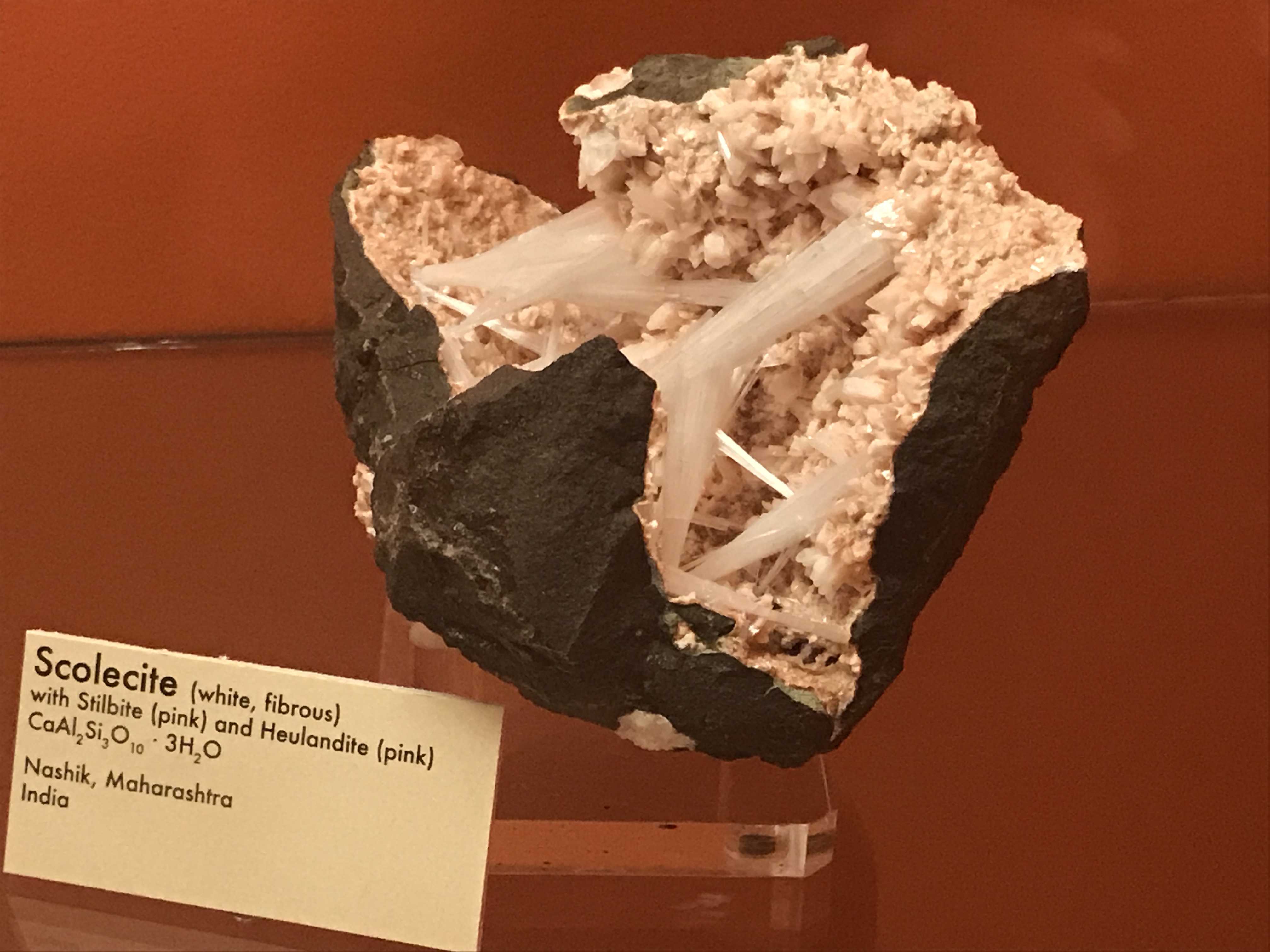By CRISTINA JANNEY
Hays Post
The Sternberg Museum of Natural History is showing off a new exhibit of minerals from around the world, recently donated to the museum from a private collection.
Geologist Richard Green and his wife, Pam, of Missouri decided they wanted to share a portion of their mineral collection with the museum. The 84 minerals that were donated are estimated to be worth $100,000, Christina Byrd, Sternberg collections manager, said. The minerals come from five continents, 19 countries and nine states.
Although the Sternberg has had a mineral collection on exhibit for some time, the new minerals are higher quality than what the museum has been able to showcase in the past, Byrd said.

Some of the minerals are rare and others are unusual examples of more common minerals. Some of the more rare minerals are prehnites, zeolites and aphopholites. The exhibit also includes examples of more common minerals such as quartz, calcite and fluorite.
Some of the minerals are more colorful such as malachite, which is a deep green, and azurite, which is a royal blue.
Byrd said she hoped the exhibit will tell a story about the minerals.
“I hope visitors learn a different lesson from each case,” she said. “From one case, I hope they will learn about mineral names and what the names of these mineral groups mean, where do they come from and why do we call things the way that we do?
“I hope they will learn that minerals come in many different colors even though they are called the same thing. Quartz can be clear, purple, pink, smoky, but it is all quartz.”

The exhibit has two examples of azurite. One has fine crystals and is a royal blue. The other has much larger crystals and looks almost black in the case. Byrd said the second example is more rare and, in the right light, exhibits a brilliant blue color.
Byrd said there are seven different ways minerals get their colors. If you know your elements, the chemical makeup of the minerals will often give you clues about where the color of the mineral came from, Byrd said. Copper is often responsible for the blue in minerals or iron for a red hue.
Another case will talk about how minerals can have different shapes and sizes. Yet another case will talk about the practical uses for minerals.
“Some minerals are very important in our day-to-day lives,” Byrd said, “be it in the devices that we’re using —cars, cell phones are full of different minerals — be they quartz, which is in glass or the metals that make up our phones. Those metals are all minerals. So I hope people walk away with a greater appreciation for what minerals are and how they impact our daily lives.”
The exhibit has an example of fluorite, which contains fluoride, which is also found in toothpaste. Rutile is used as a whitening agent in products such as liquid paper correction fluid and very small amounts in the filling in sandwich cookies. Other minerals in the exhibit are used in makeup.

The heaviest mineral in the collection is galena, which is a lead sulfide. The specimen is smaller than a soccer ball, but weighs over 100 pounds.
The museum is working with a mineralogist at Fort Hays State University on cards that will further tell the story of the minerals, but the minerals are currently in cases and available for viewing by the public. Currently, each mineral is displayed with a card that contains its name, the chemical composition of the mineral and the place were the specimen was collected.
The full exhibit should be completed in the next two to three weeks.

